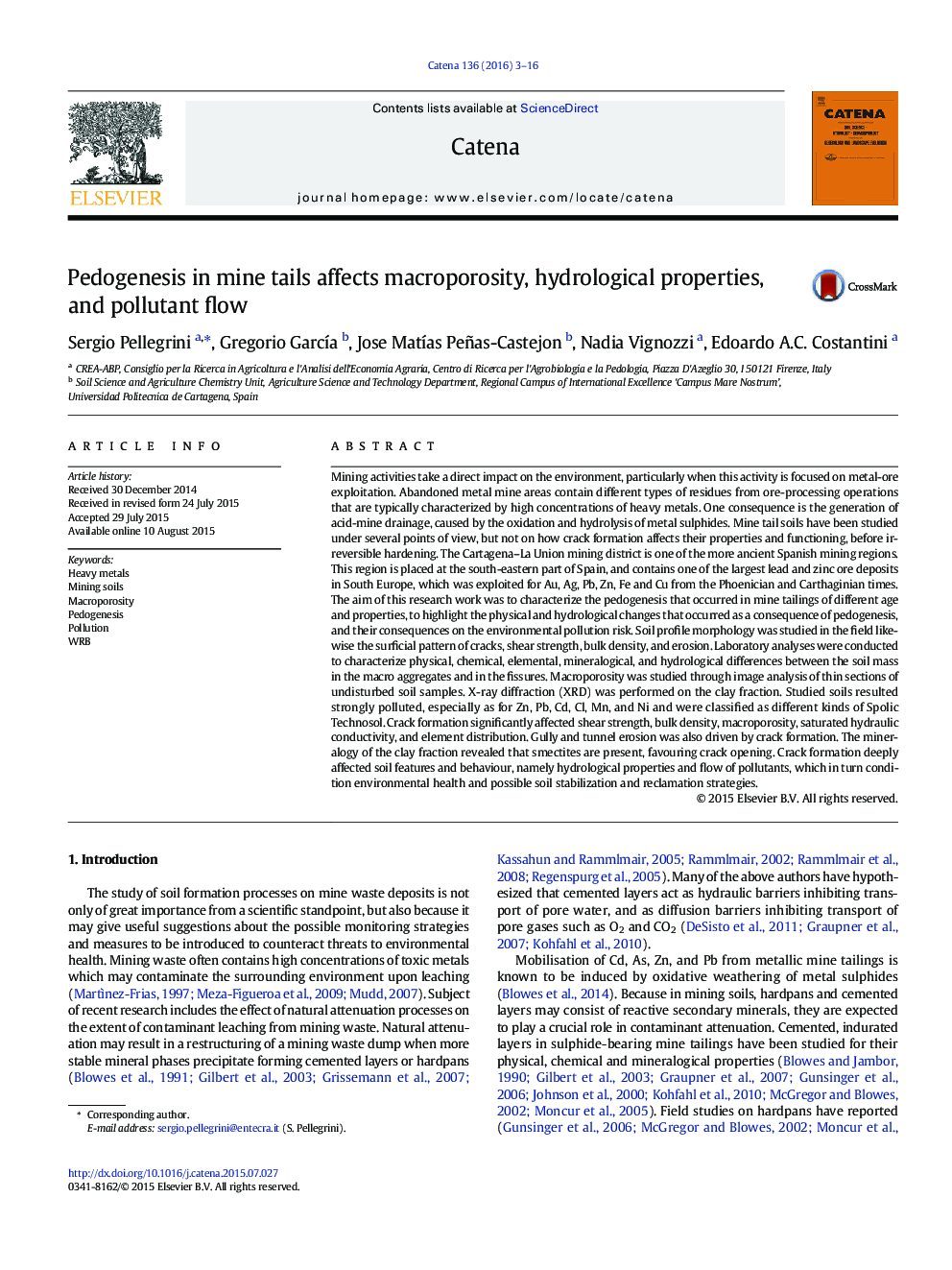| کد مقاله | کد نشریه | سال انتشار | مقاله انگلیسی | نسخه تمام متن |
|---|---|---|---|---|
| 4570993 | 1629216 | 2016 | 14 صفحه PDF | دانلود رایگان |
• Mine soils show several pedogenetic processes and incipient vertic properties.
• Soil cracks are more porous and permeable than surrounding mass.
• Total element content increases in soil crack infillings.
• Water soluble element content decreases in soil crack infillings.
• Crack frequency is a good indicator of pedogenesis and pollution risk.
Mining activities take a direct impact on the environment, particularly when this activity is focused on metal-ore exploitation. Abandoned metal mine areas contain different types of residues from ore-processing operations that are typically characterized by high concentrations of heavy metals. One consequence is the generation of acid-mine drainage, caused by the oxidation and hydrolysis of metal sulphides. Mine tail soils have been studied under several points of view, but not on how crack formation affects their properties and functioning, before irreversible hardening. The Cartagena–La Union mining district is one of the more ancient Spanish mining regions. This region is placed at the south-eastern part of Spain, and contains one of the largest lead and zinc ore deposits in South Europe, which was exploited for Au, Ag, Pb, Zn, Fe and Cu from the Phoenician and Carthaginian times. The aim of this research work was to characterize the pedogenesis that occurred in mine tailings of different age and properties, to highlight the physical and hydrological changes that occurred as a consequence of pedogenesis, and their consequences on the environmental pollution risk. Soil profile morphology was studied in the field likewise the surficial pattern of cracks, shear strength, bulk density, and erosion. Laboratory analyses were conducted to characterize physical, chemical, elemental, mineralogical, and hydrological differences between the soil mass in the macro aggregates and in the fissures. Macroporosity was studied through image analysis of thin sections of undisturbed soil samples. X-ray diffraction (XRD) was performed on the clay fraction. Studied soils resulted strongly polluted, especially as for Zn, Pb, Cd, Cl, Mn, and Ni and were classified as different kinds of Spolic Technosol. Crack formation significantly affected shear strength, bulk density, macroporosity, saturated hydraulic conductivity, and element distribution. Gully and tunnel erosion was also driven by crack formation. The mineralogy of the clay fraction revealed that smectites are present, favouring crack opening. Crack formation deeply affected soil features and behaviour, namely hydrological properties and flow of pollutants, which in turn condition environmental health and possible soil stabilization and reclamation strategies.
Journal: CATENA - Volume 136, January 2016, Pages 3–16
